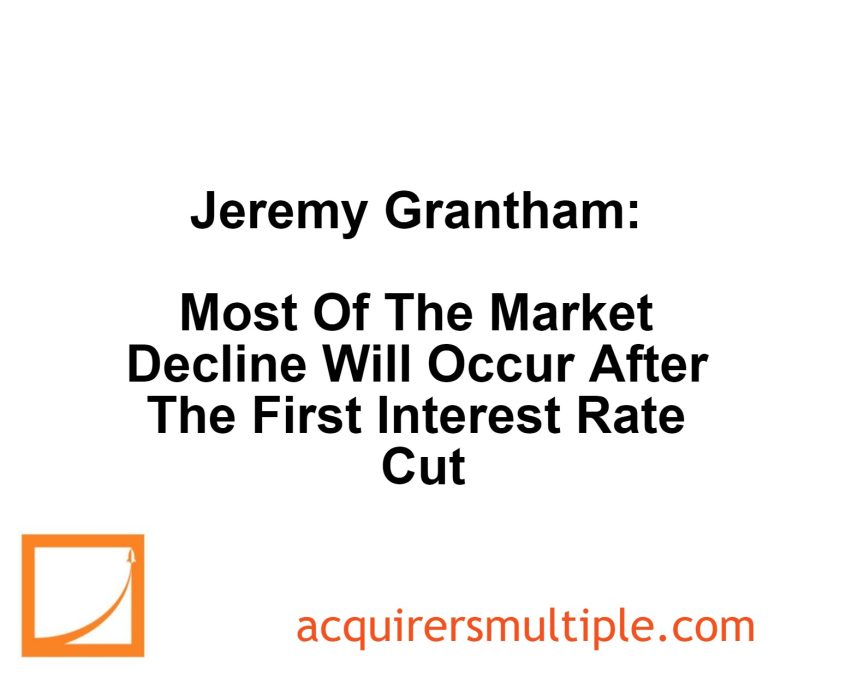During his recent interview on The Investor’s Podcast, Jeremy Grantham discussed how rising debt has failed to stimulate the U.S. economy, pointing out that the debt-to-GDP ratio tripled after 1987, yet economic growth slowed.
He argues that despite expectations, increased debt hasn’t enhanced growth and questions the excitement over low-interest rates, which mainly allow for more borrowing without improving GDP.
Grantham also highlights a recurring pattern where most of a market decline occurs after the first interest rate decrease, suggesting that optimism and a tendency to forget past negative outcomes leads to repeated mistakes in investor behavior.
Here’s an excerpt from the interview:
The idea about debt is it stimulates the economy, well starting in ’87 after a 100 years of drifting up in debt to GDP ratio. That’s all debt—government debt, corporate debt. It had drifted up for 100 years, and then it kinked to 45 degrees and went shooting up from ’89 until the other day, and it tripled. It tripled the ratio. So, you had the biggest country in the world, the biggest economy in the world, I should say, tripling its debt to GDP ratio.
What an interesting scientific experiment that should reveal something, and the growth rate of its GDP slowed clearly and considerably. The growth rate after ’89 is two-thirds of what the growth rate was since the war, from 1945 to ’89. So, you had a magnificent experiment. Increasing the level of debt did not apparently stimulate the economy; it slowed considerably.
Now, of course, there are many other factors; it’s a very complicated issue. But you would think if debt is so wonderfully helpful to economic growth, it might have at least shown better results than that.
And an interest rate is a second derivative—the only significance of a low interest rate is it allows you to borrow more money. But if borrowing more money clearly, in the macro level, has not had the effect of increasing GDP growth, why would we get so excited with a lower interest rate?
Secondly, why would we always forget that most of a market decline occurs after the first rate decrease, as you referred to.
I mean, that takes talent because that goes over and over again. We get enthusiastic about the first rate cut, and then we’re back to the races, and history is pretty clear.
Most of the decline occurs after the first rate cut. Why do we forget it? Because that’s who we are. We travel optimistically, and we like to forget unpleasant features.
You can watch the entire interview here:
For all the latest news and podcasts, join our free newsletter here.
Don’t forget to check out our FREE Large Cap 1000 – Stock Screener, here at The Acquirer’s Multiple:




One Comment on “Jeremy Grantham: Most Of The Market Decline Will Occur After The First Interest Rate Cut”
Pl include me inmailing list thanks